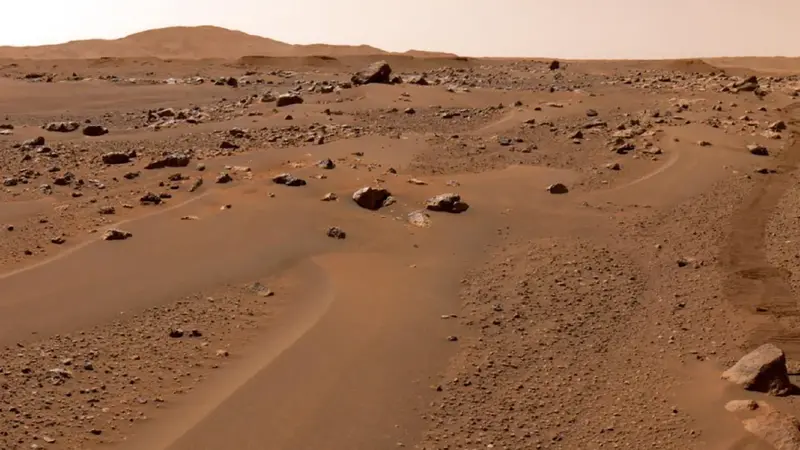A new study by researchers from Brown University (USA) and the University of Bern (Switzerland) has shown that the oxidation of iron in Martian rocks was a result of the presence of water, rather than dry oxidation of hematite, as previously thought.
“We tried to create a copy of Martian dust in the laboratory using different types of iron oxide. We found that ferrihydrite mixed with basalt best matches the minerals discovered by spacecraft on Mars,” said planetary geologist Adomas Valantinas.
It is well known that it is rich in iron. Mars is red due to ancient processes rusting Iron-containing minerals were breaking down, covering the planet in reddish dust. It became so bright that the blush of Mars can be seen in the night sky even with the naked eye. But there are several ways to cause rust on rocks. But which one is responsible for Mars turning red?
What did the researchers report?
Now there is no doubt that once on the surface Red Planet There was water. The evidence obtained by the rovers clearly indicates that Mars was once marshy. However, the study of Martian dust collected by spacecraft has found no signs of water.
Previously, scientists believed that the mineral responsible for Mars’ hue was hematite: it forms in dry conditions and can have a red color. According to this model, hematite formed after water had disappeared from the surface of the Red Planet.
However, Valantinas and his colleagues convincingly demonstrated that another mineral, ferrihydrite, is a likely factor in the color of Mars. This mineral is actually an iron oxide that forms rapidly in the presence of cold water. Until now, scientists have lacked evidence that it plays a key role in the coloring of Mars, the publication reported. Science Alert .

Martian dust
What did the experiment show?
Researchers have thoroughly studied and analyzed data about the Red Planet obtained from several orbital spacecraft. They compared their hypothesis with the composition of Martian… meteorite as well as data from long-term measurements by rovers. The analysis results showed that ferrihydrite is a likely contributor to oxidized iron on Mars.
Using a powerful mill, scientists ground various samples of oxidized iron to a size equivalent to dust on the Red Planet. They then analyzed the results using the same methods that were used for analyzing Martian dust.
The best match between him and the crushed samples was not hematite, but ferihydrite with the formula Fe5O8H · nH2O. This indicates that the minerals likely formed when Mars was still wet. They were then destroyed and dispersed across the planet’s surface, while still preserving their water signature.
So now scientists will have to adjust their understanding of the geological history of the Red Planet.
“Mars still remains a red planet. It’s just that our understanding of why it is red has changed. The main takeaway is that since ferrihydrite could only form when there was still water on the surface, Mars became rusty earlier than we thought. Moreover, ferrihydrite remains stable under current Martian conditions,” noted Valantinas.
Of course, the scientists’ findings still need to be confirmed. But it won’t take long for that: the samples of Martian rocks have been collected and are waiting to be delivered to Earth laboratories.
“By obtaining these valuable samples, we will be able to accurately measure how much ferrihydrite the dust contains and what this means for our understanding of the history of water and the possibility of life on Mars,” said physicist Colin Wilson from the European Space Agency.
The results of the study were published in the journal Nature Communications.
